Someone said that Andalusia is addictive, and the first trip to the area will not be the last, and for good reason! Andalusia is really big, diverse, and interesting. There, you can discover charming towns, beautiful mountains, unspoiled nature, and larger cities where you can get lost, visit amazing museums, or sample the local cuisine.
But where did Andalusia even come from? A popular legend about the origin of Andalusia tells of Hercules, the mythological god who divided Europe from Africa through the Straits of Gibraltar. Thus, Hercules became the symbol of the region, and alongside two columns, he was placed on the white and green flag of Andalusia.
Today, I will talk about what to see in Andalusia. I spent a few winter weeks on the Costa del Sol, and during that time, I explored the region’s lesser-known and more famous corners. The list, as you might expect, represents the beginning of exploring this incredibly beautiful area. If you’d like to add something of your own, I look forward to your comments.
Table of Contents
- 1 Alhambra – a UNESCO-listed Moorish gem!
- 2 Málaga: Coastal Gem
- 3 Pico del Cielo – Breathtaking Scenic Trail
- 4 Nerja: A Charming Town on the Costa del Sol
- 5 Rio Chillar Trail
- 6 Frigiliana – One of the Most Beautiful Villages in Spain
- 7 Marbella – An Exclusive Resort in Andalusia
- 8 Cliffs of Maro-Cerro Gordo
- 9 Andalusian Ronda – City Full of History
- 10 Setenil de las Bodegas – the Rock City in Andalusia
- 11 Andalusia – What to Eat?
- 12 Andalusia – Where to Stay?
- 13 What is worth seeing in Andalusia?
Alhambra – a UNESCO-listed Moorish gem!
The Alhambra is undoubtedly one of the most beautiful places in Andalusia. If you are planning a trip to Andalusia, Granada and the remarkable Alhambra should definitely be on your list of places to see. Listed as a UNESCO World Heritage Site, the fortress is one of the most impressive examples of Moorish architecture. This castle-fortress captivates not only in photos but also in person. The Moorish rulers, when creating this building, were guided by the desire to create a paradise on earth. In my opinion, they succeeded! The second part of the tour is the huge Generalife – one of the oldest surviving Moorish gardens, the summer residence of the rulers of Granada. On the decorations in many places, you can see inscriptions from the Quran. The tour takes a minimum of 2 hours, not counting the interior of the palace, which takes about an hour to visit. It is worth preparing for 3-4 hours if you want to see everything and relax in the gardens. From the Alhambra, you can see the peaks of the Sierra Nevada mountains. Their altitude reaches 3,500 meters above sea level, and at this time of year, they are snow-capped.
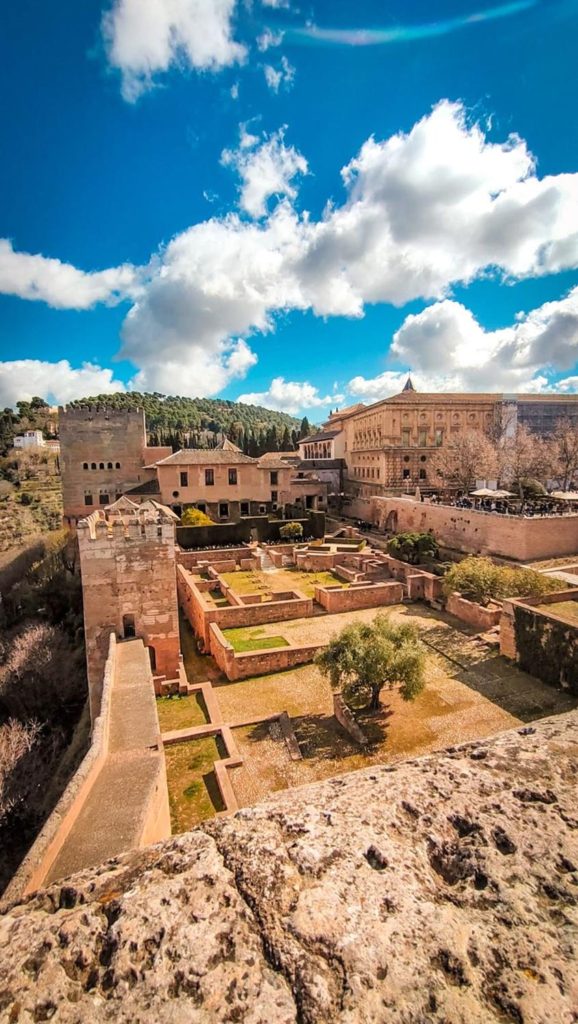
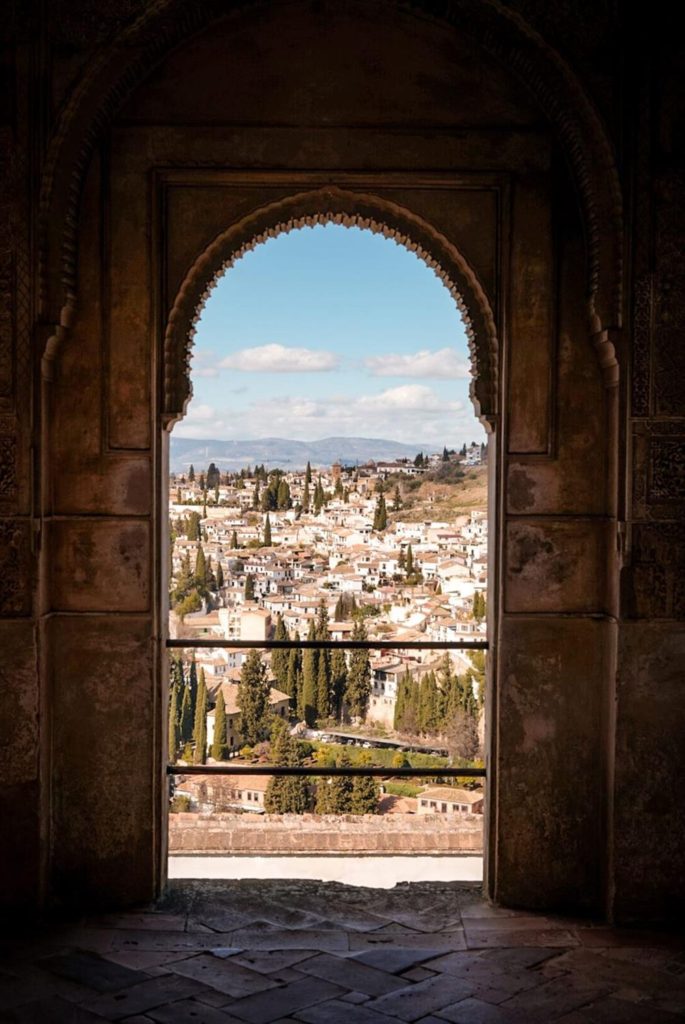
Málaga: Coastal Gem
- La Concepción Park is a place where you can spend the whole day. There is somewhere to walk and somewhere to have a picnic. During the week, there were practically no visitors, but on weekends, this tends to change as it’s quite a popular place among locals. It’s worth knowing that the color of the water depends on the hour you come. We were there really early in the morning, and in my opinion, this is not the best time. The higher the sun, the bluer the water.
- The Botanical Garden in Málaga costs €5.20, and it’s free on Sundays from 2 pm (winter season, different hours in summer). I know some of you will say that nature in Spain is so beautiful that you don’t need to pay extra. But it’s really WORTH it. It’s a romantic garden with winding alleys and flowing streams – a place perfect for nature lovers. Singing birds and virtually no other tourists create a soothing ambiance. Perfect.
Besides, while in Málaga, it’s worth visiting the Gibralfaro Castle and the Alcazaba fortress, take a walk through the Old Town, and sit in one of the many cafes. Remember that when buying a ticket to the castle, it is worth buying a ticket to the fortress right away (it is cheaper).
See also: Malaga – Best Things to Do & Top Places to Visit
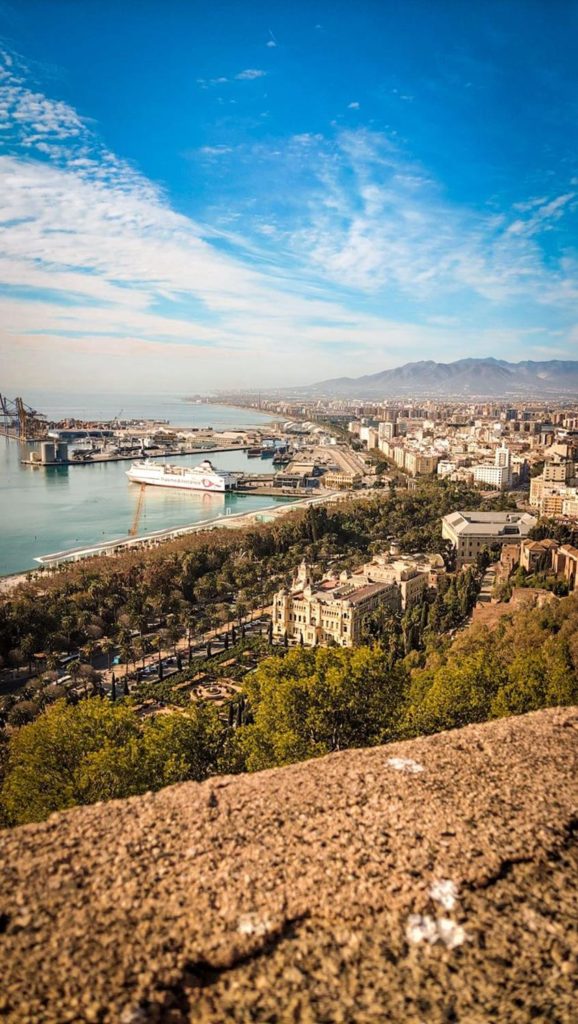
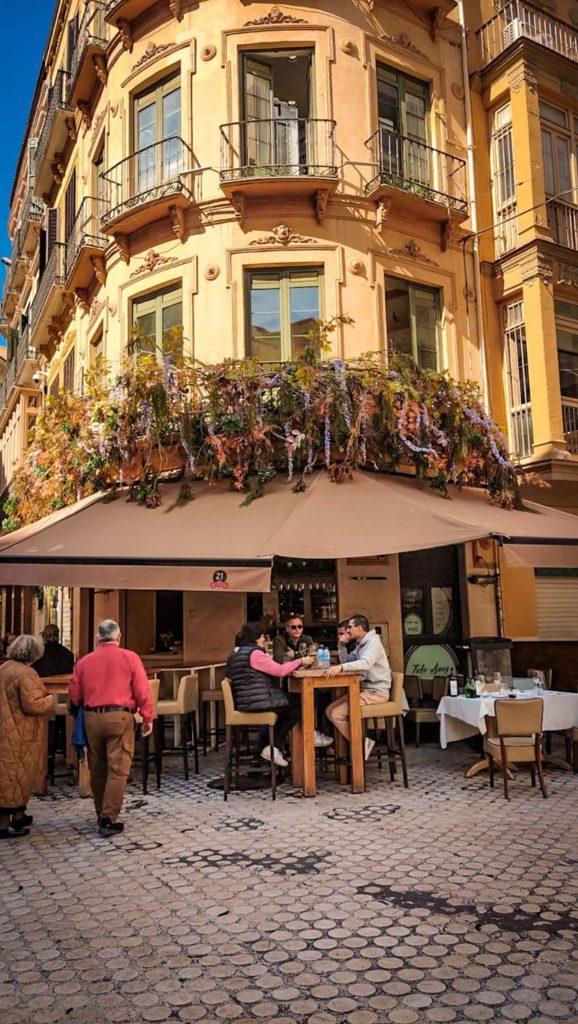
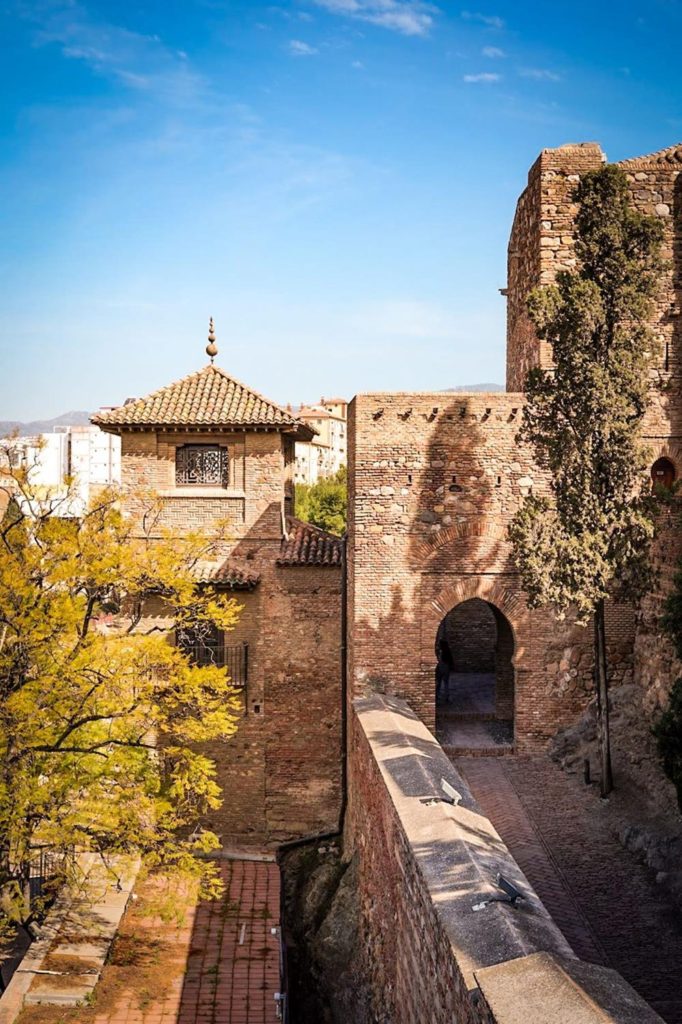
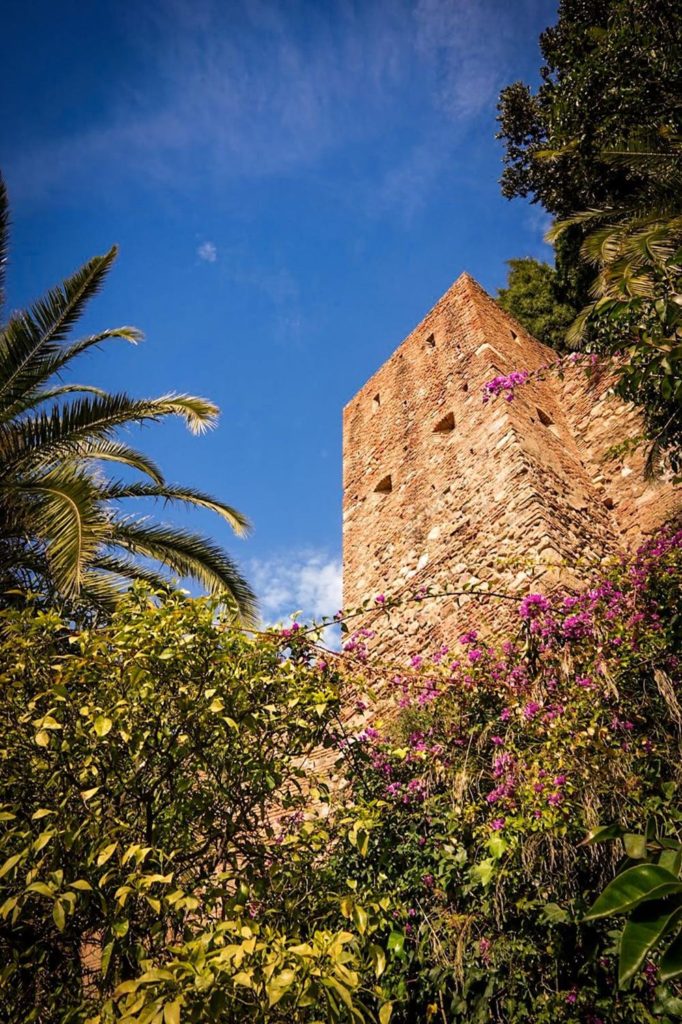
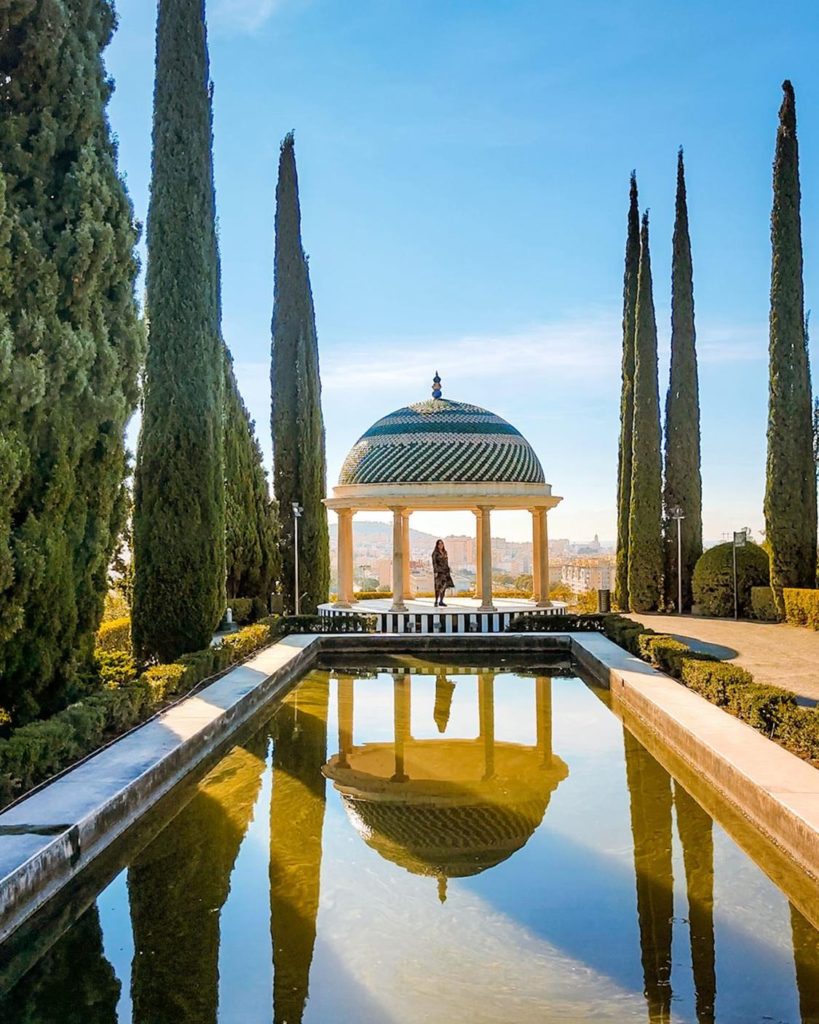
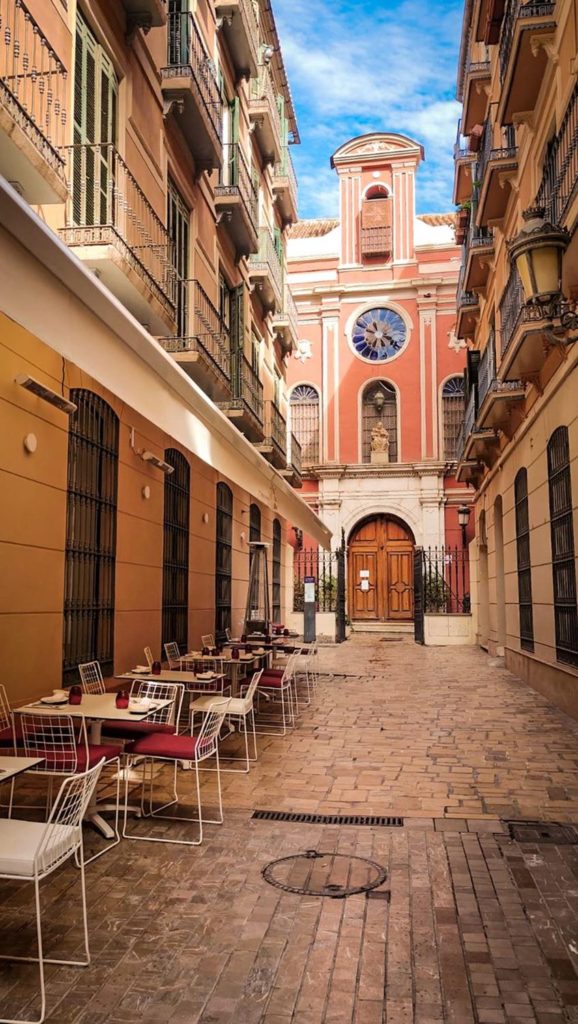
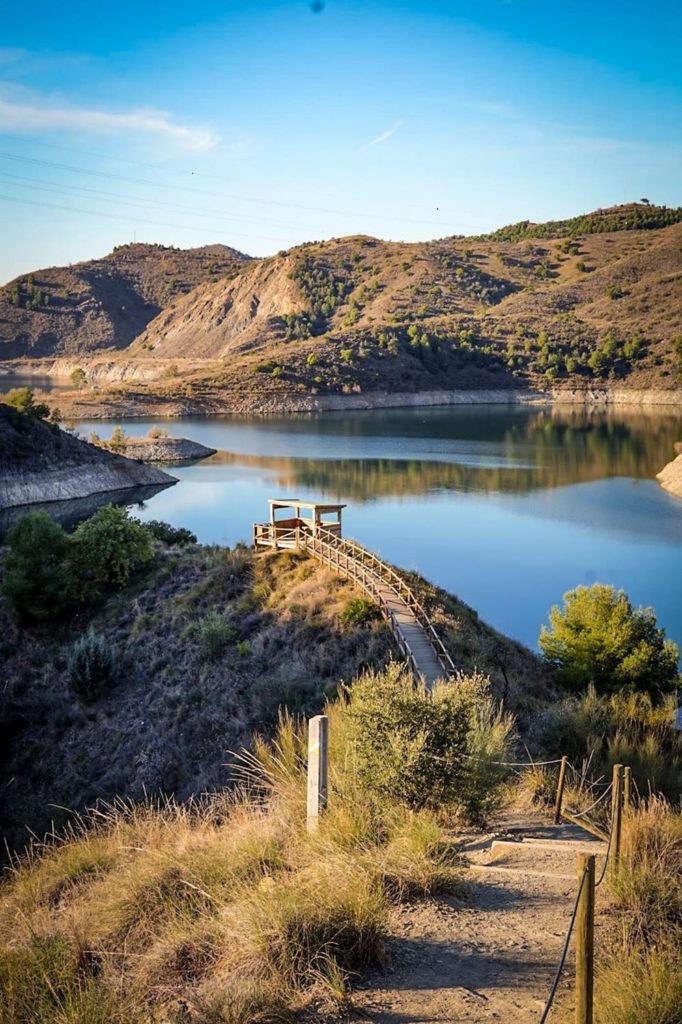
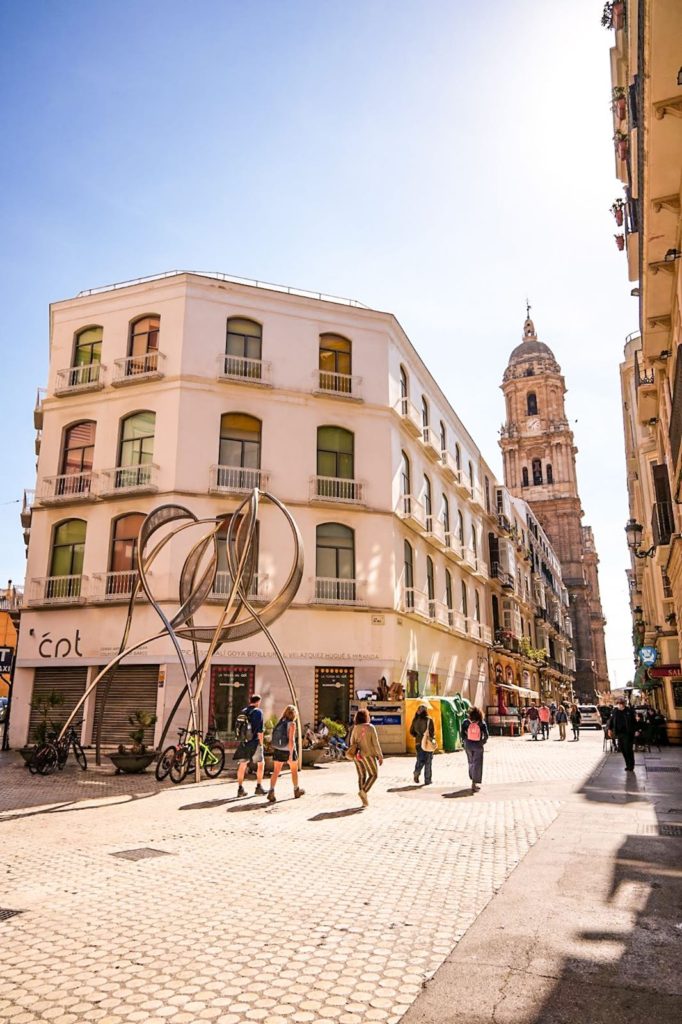
Pico del Cielo – Breathtaking Scenic Trail
We often go to the mountains when traveling, looking for beautiful, scenic routes. The destination itself doesn’t matter to me; I sometimes even turn back halfway, depending on my condition or the trail. In Andalusia, you will find a mass of beautiful trails, but I would like to recommend Pico del Cielo (1508 m), located near Nerja. It is not the highest peak in the Sierra Almijara, but the road is definitely beautiful! It’s worth climbing to the top because, although the view on the trail is amazing, of the mountains and the sea, the view from the top of Pico del Cielo is even better!
There are several trails; from the Nerja side, there are two to choose from:
- 10 km, counting from the parking lot at the cave
- 5 km from the second parking lot – then we have most of the scenic route, well, and no one will dust us on the way ?
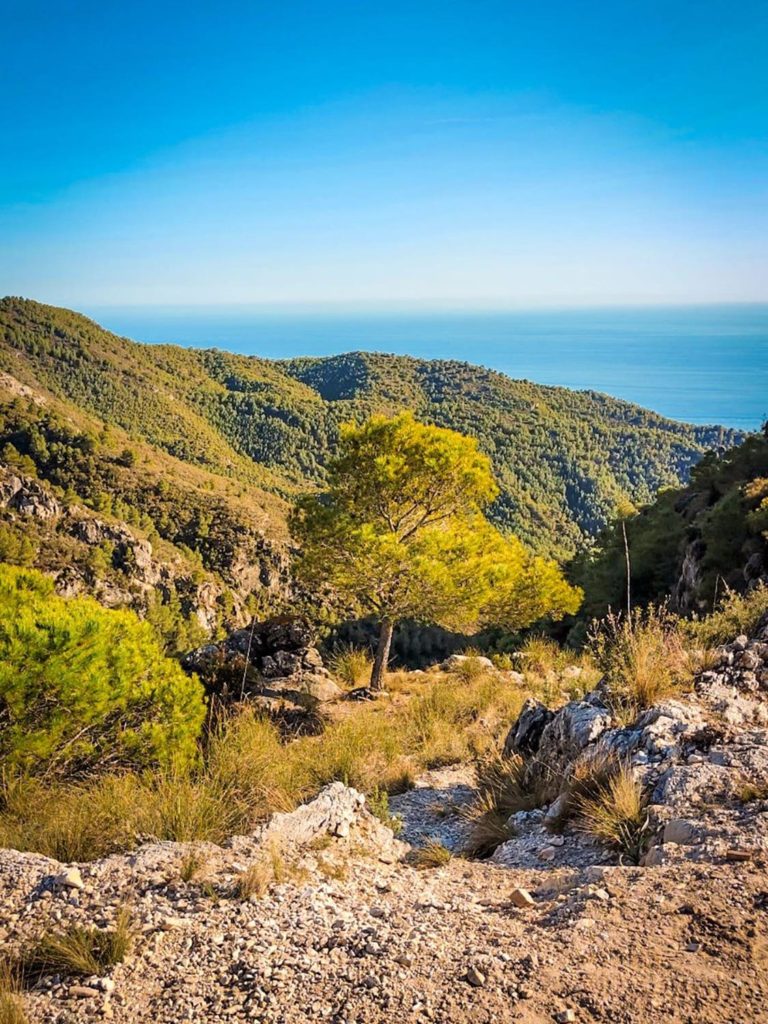
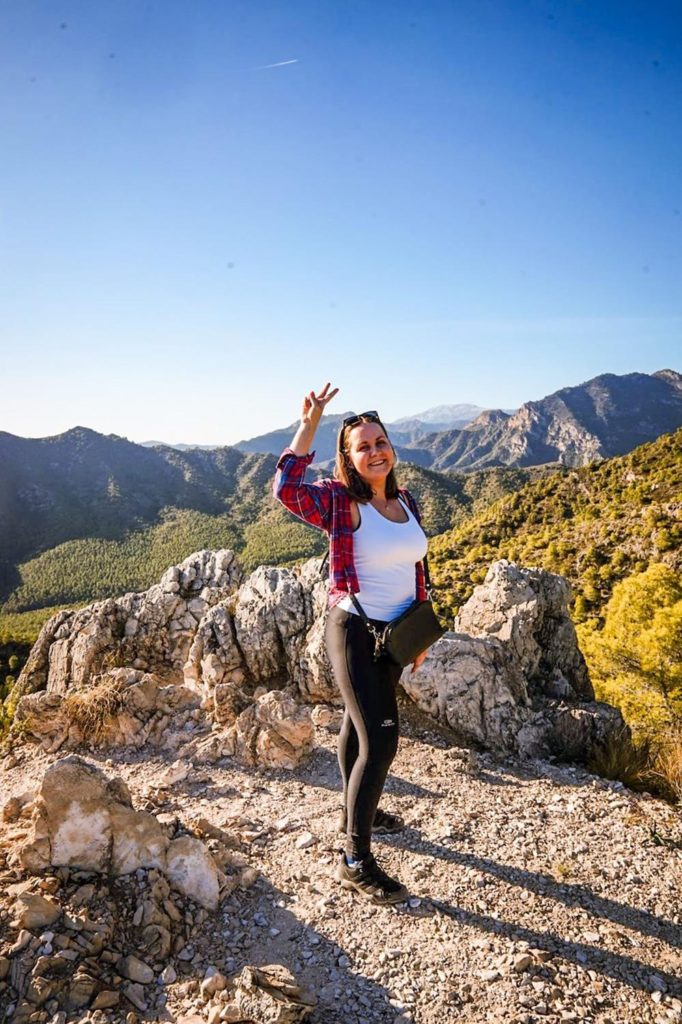
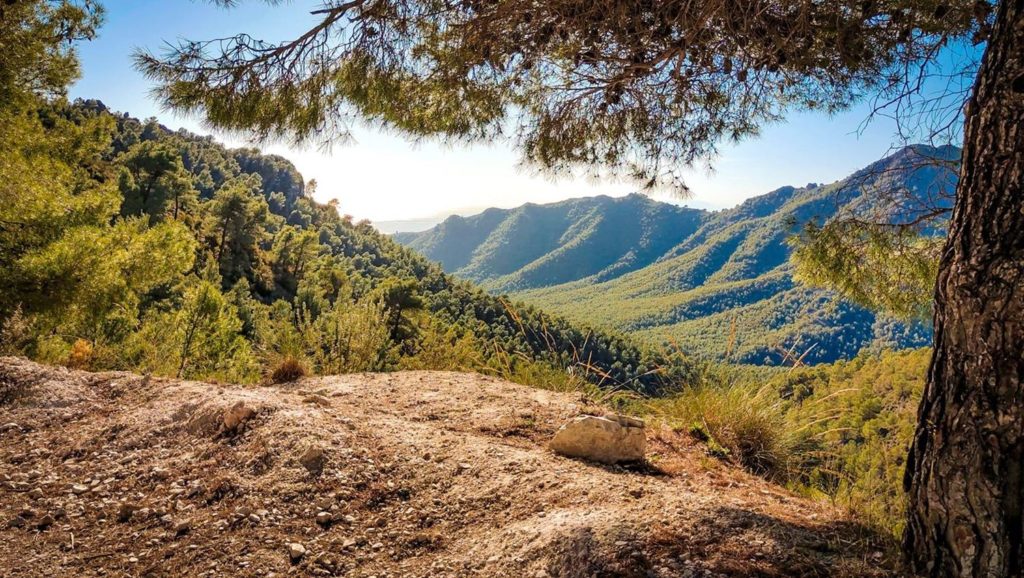
Nerja: A Charming Town on the Costa del Sol
On the Costa del Sol, I was delighted by the town of Nerja, located about 40 minutes from Malaga; in my opinion, it is the most beautiful town in the area. What is worth doing here? There are quite a few interesting places and attractions in this Andalusian town!
- Balcón de Europa – a beautiful viewpoint worth seeing
- Cueva de Nerja or cave located in this village. It is here that you will find the world’s largest stalagmite with a height of 32 meters! Entrance is free at 9:30 am.
- Museum – on the same ticket as the cave, you can enter the museum. It is worth it; it is really interesting.
- The beaches at this time of year (February) are rather empty, sometimes a few people are sunbathing during the day. The beaches in Nerja are beautiful, undeniably.
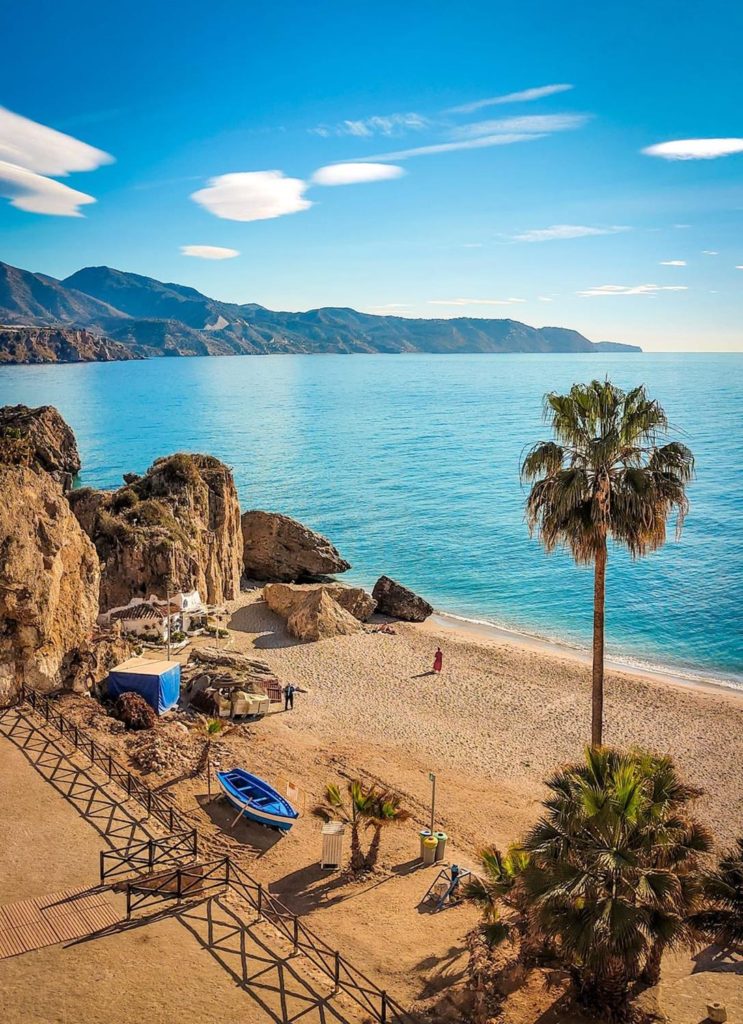
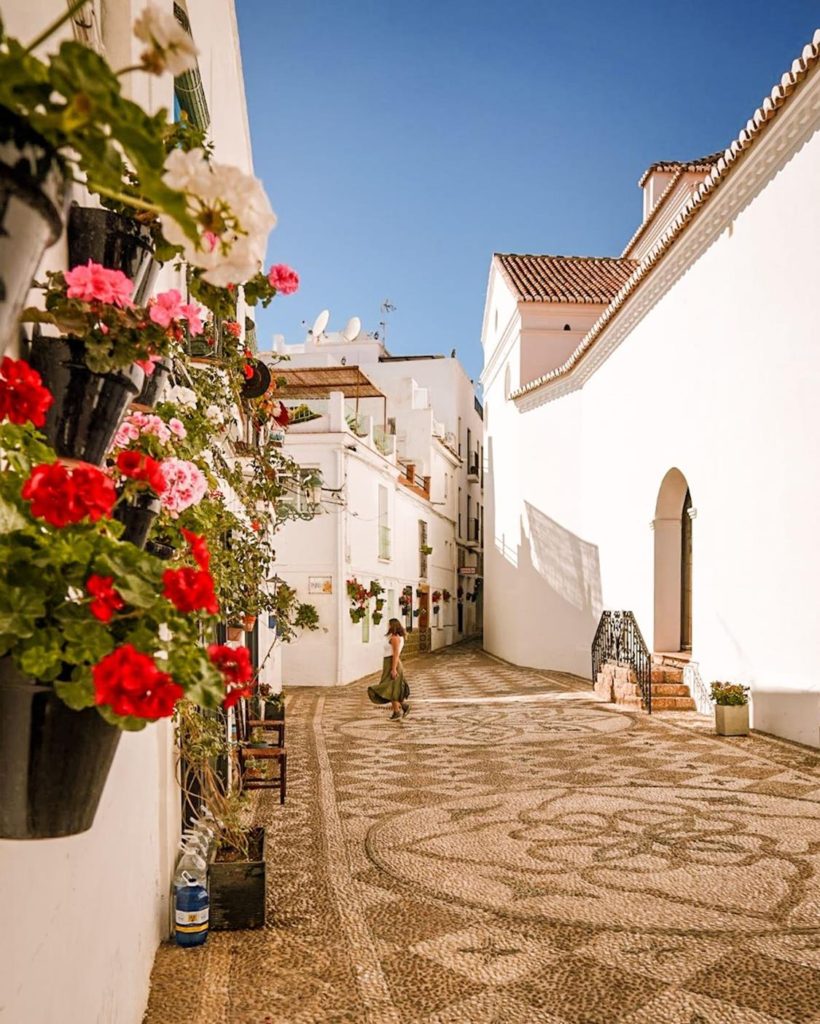
Rio Chillar Trail
The Chillar River Trail begins in the town of Nerja, 40 minutes from Malaga. Although I’ve already mentioned the town in this post, the trail is a less popular attraction that I think deserves a separate paragraph. Why? It’s a place where we can feel nature with all our senses: it’s peaceful, we can hear the sound of the river, and from, say, halfway along the trail, we walk on water!
The route starts quite innocently; it is surrounded by rocks, and you can hardly see the river. I thought it would be like this until the end, but the further you go, the wider the river gets. In years of heavy rainfall, the trail can be flooded with water up to the knees! This year, the water was at most before the knee, up to mid-calf, and that’s further down the trail. The trail is not crowded, either on weekends or during the week; instead, it is extremely beautiful. I personally walked it twice, and it is, in my opinion, a real gem among the attractions of Andalusia.
Important notes:
- There is no internet or coverage on the route, so you have to be really careful.
- Walking on the water can be done in shoes designed for this purpose, but many people complain that they are uncomfortable. Personally, I walked in sneakers, and it was OK.
- The route is easy, but you need to be careful walking on the stones (they can be slippery, but it happens).
- It takes at least 3 hours to walk the route (there and back) (that’s how much we walked, but we did not reach the waterfall!).
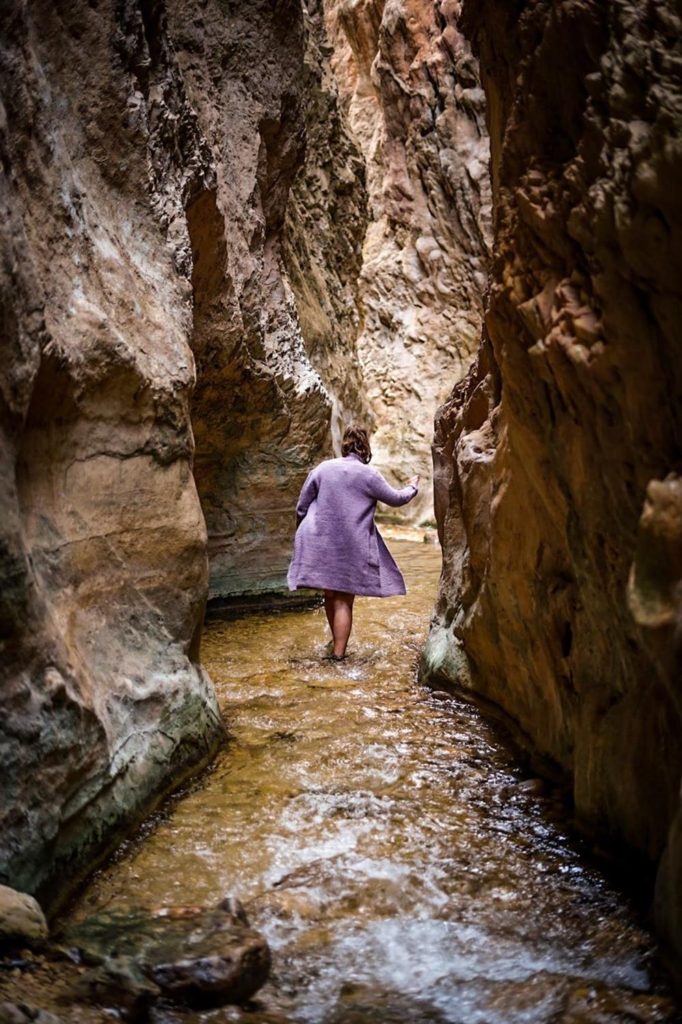
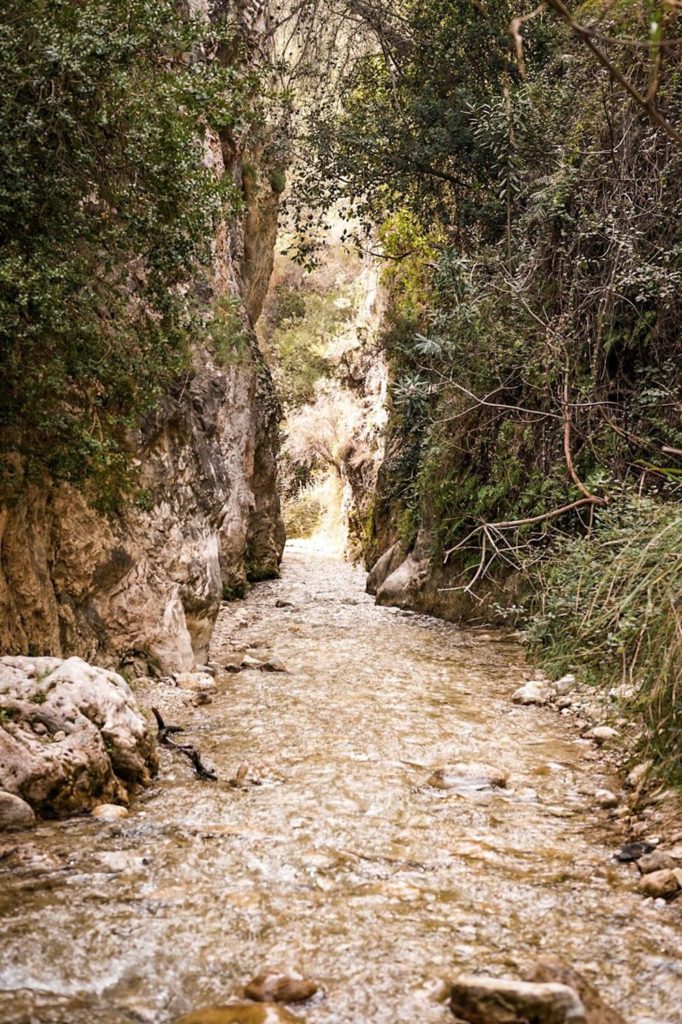
Frigiliana – One of the Most Beautiful Villages in Spain
Frigiliana is one of the most beautiful villages in Spain – this is not my opinion; it has held this title since 2015! Located 300 meters above sea level, overlooking the Mediterranean Sea, it delights many tourists. It is a place that combines three cultures: Christians, Jews, and Muslims once lived here.
In addition to strolling through the truly charming Andalusian streets, it’s worth hiking any of the mountain trails or even enjoying a cup of coffee overlooking the coast.
Parque de la Paloma If you’re looking for an unusual city park, make a note of this place: the Parque de la Paloma located in the town of Benalmadena, just outside Málaga. Why is it so unusual? At first glance, it’s not much different from other places. It features cafes, a pond, and palm trees. What is unique about it are the animals. Free-running roosters, chickens, ducks, rabbits add to the incredibly familiar atmosphere of the place. I heartily recommend it!
Interesting fact: in many places in Andalusia, you will meet green parrots. In this park, there are really a lot of them!
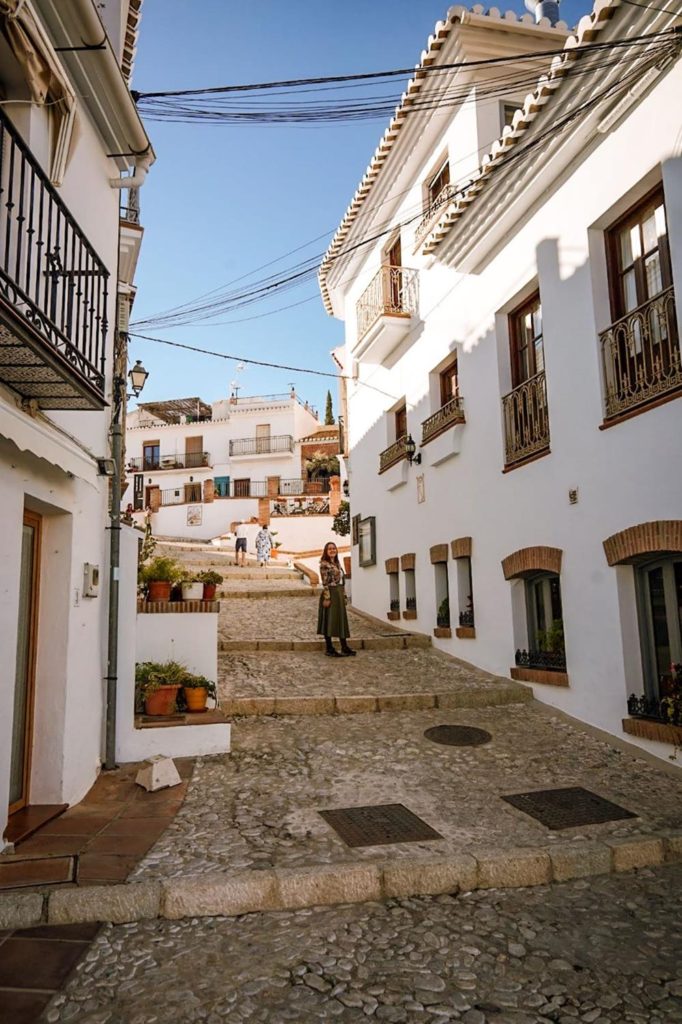
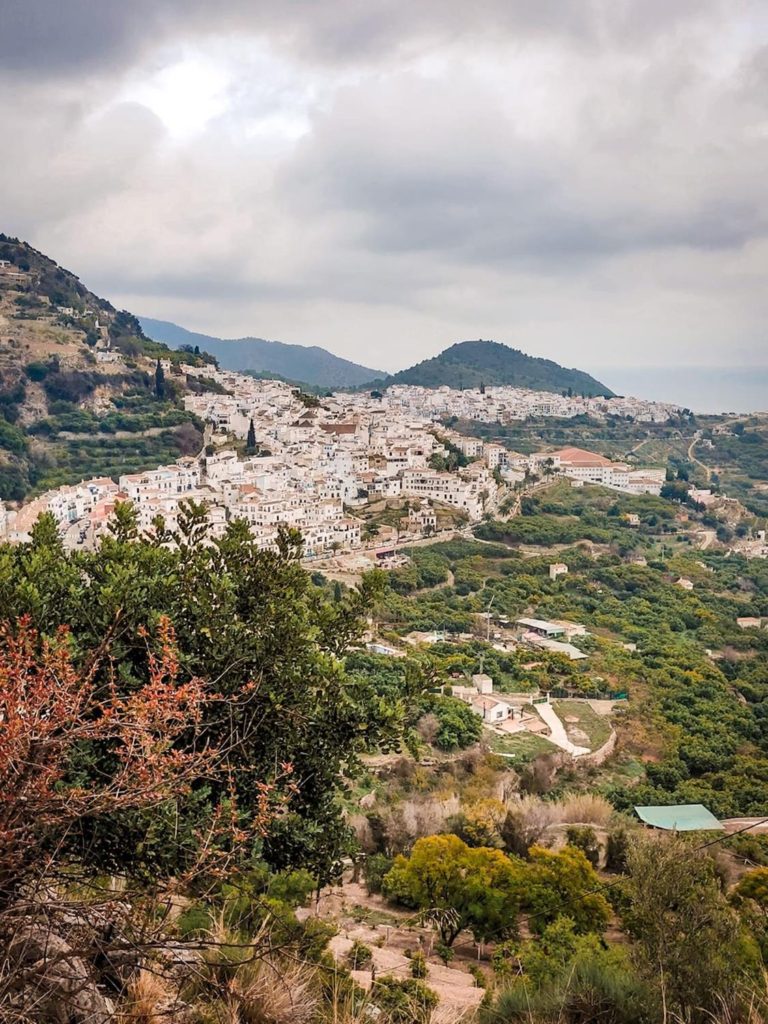
Marbella – An Exclusive Resort in Andalusia
Marbella is, according to many, the city to visit. This is where the best cars come, there are trendy pubs and clubs. The icing on the cake will be that you will drink an extremely Instagram-able pink cappuccino here. All right, but what else is worth doing in Marbella? Marbella is famous for its beautiful beaches, seaside promenade, unique harbor, and nightlife. Of course, there are mountains in the area, and there are a bunch of interesting attractions and Gibraltar. Although, according to some, it’s a rather snobbish place, and I’m not fond of such, I really liked Marbella, and if we go to Andalusia again, I’ll stay in its area – it really has a lot to offer!
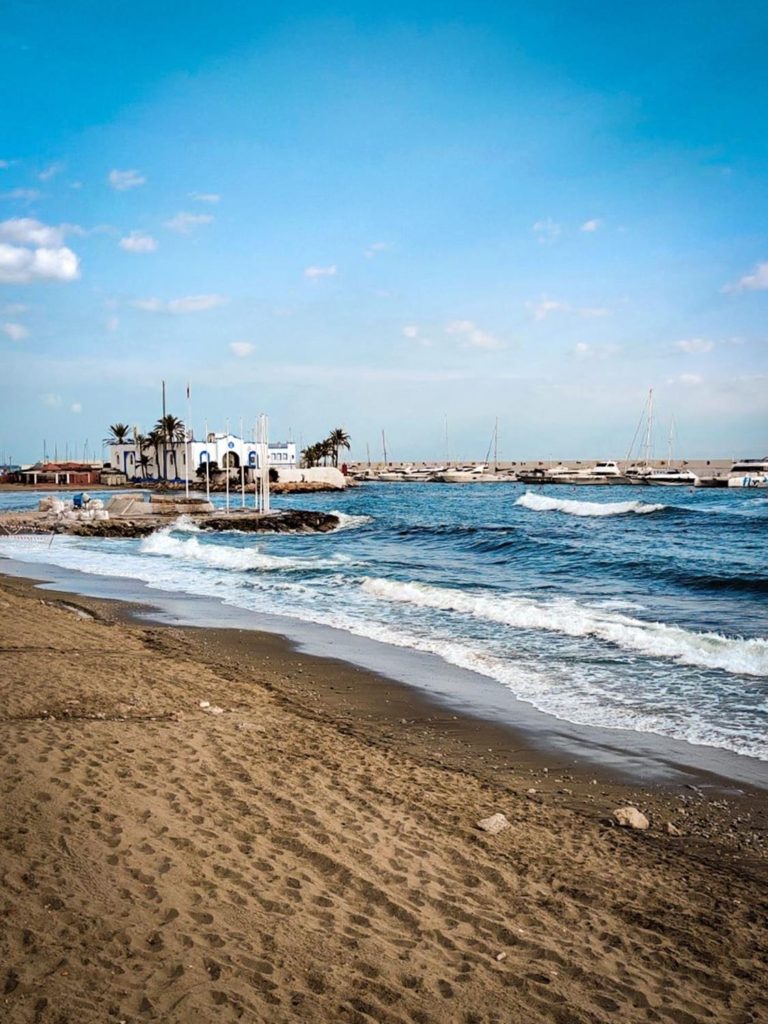
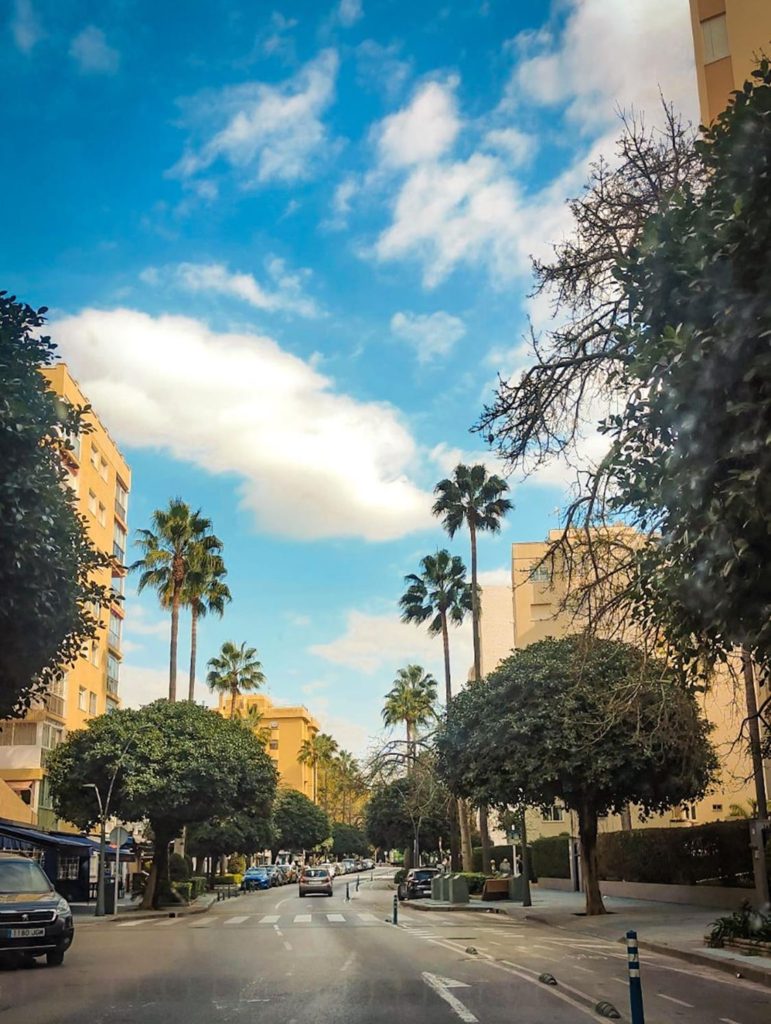

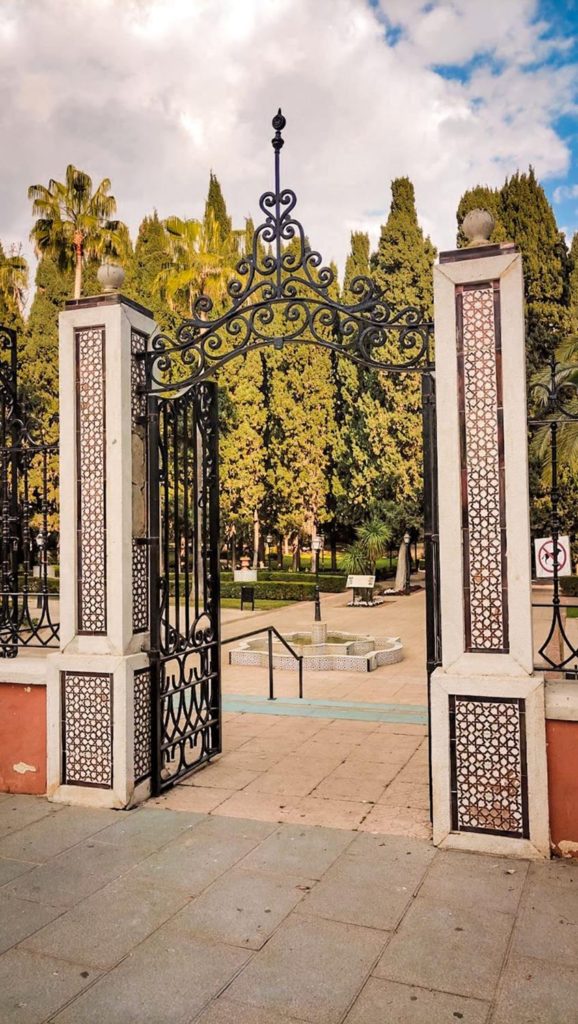
Cliffs of Maro-Cerro Gordo
The cliffs located near Malaga are truly phenomenal. Let’s start with the fact that it’s a great place for walking; there are several trails here. Besides, the region is famous for the small beaches hidden between the cliffs. The views from the cliffs are unearthly, and according to the guidebook, on sunny, clear days, you will see the African coastline from them. Worth seeing is La Marquesa watchtower, erected in the 16th century to guard the sea when pirates sailed the Mediterranean. I would add that there are four more similar towers, and you can learn more about their history at the museum in Nerja.
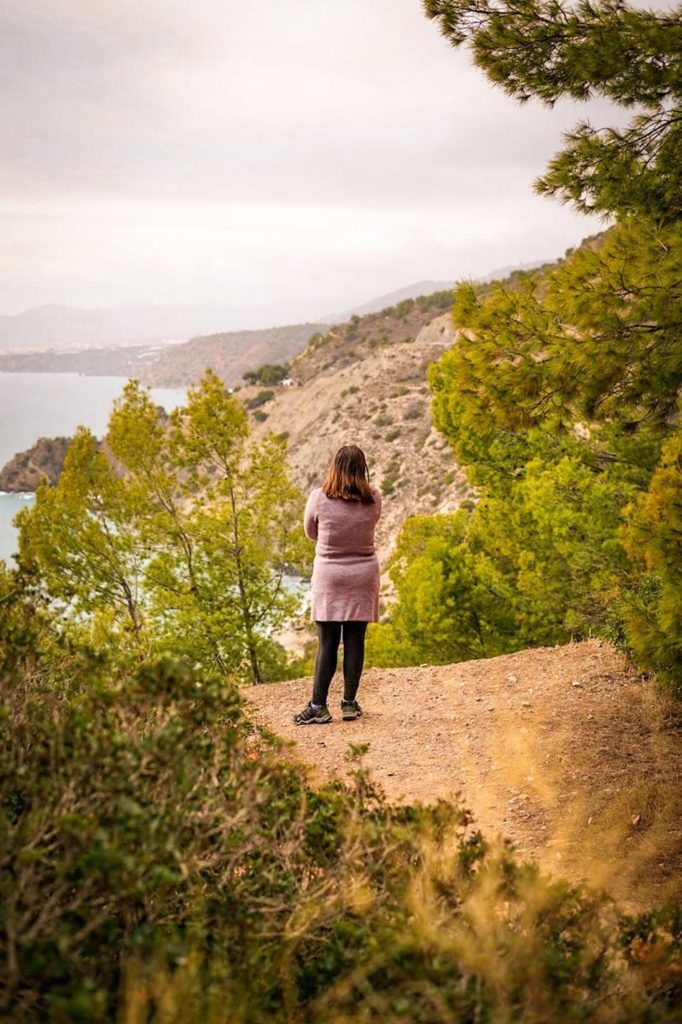
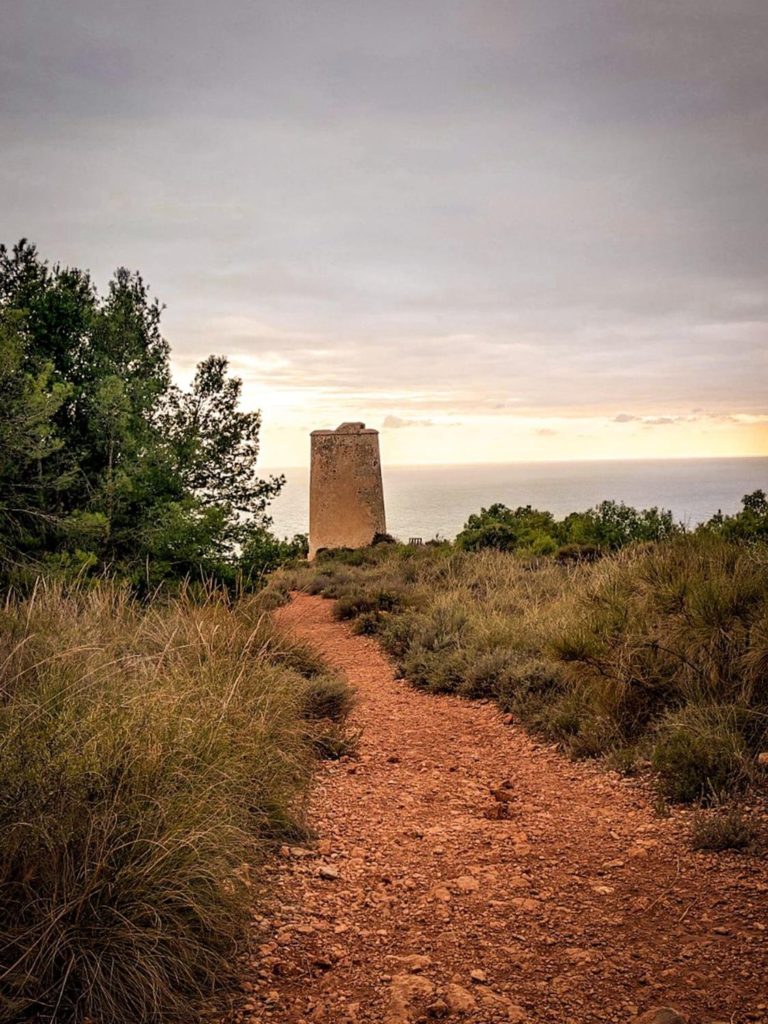
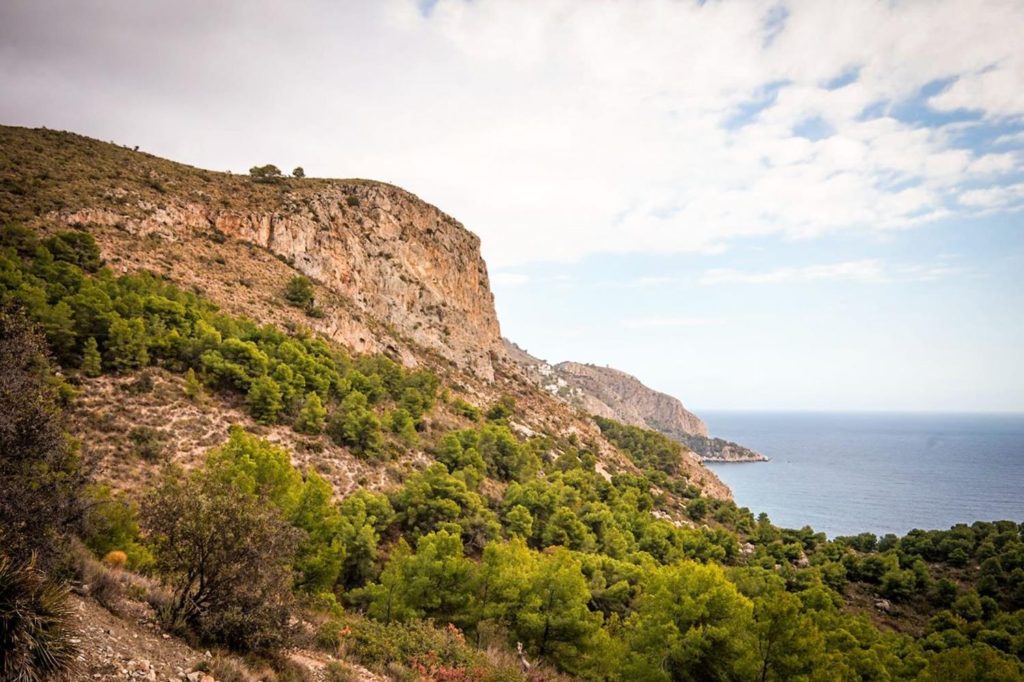
Andalusian Ronda – City Full of History
Ronda is located deep in the mountains. Driving from Málaga, you can still marvel at the amazing climate and green hills. The city consists of two main districts: La Ciudad, the Arab part, and El Mercadillo, the Christian part. A bridge connects the two parts but separates them by a very deep gorge, the Guadalevín River. The gorge is 160 meters deep, and you can walk to it (there is also a waterfall at the bottom).
What is worth doing and seeing in Ronda? This is actually a day trip, as there are many attractions. The Collegiate Church of Santa María la Mayor, palaces, museums, bullring arena, gardens. And that’s not the only attraction in the area; there are many more places worth visiting in this part of Andalusia, for example, the Setenil de las Bodegas.
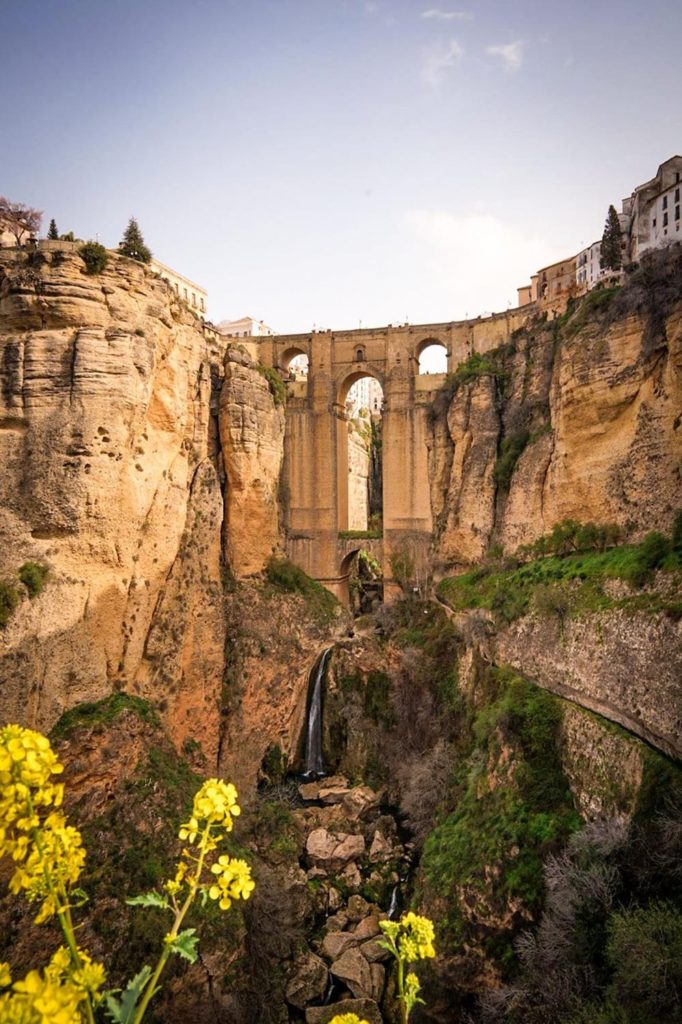
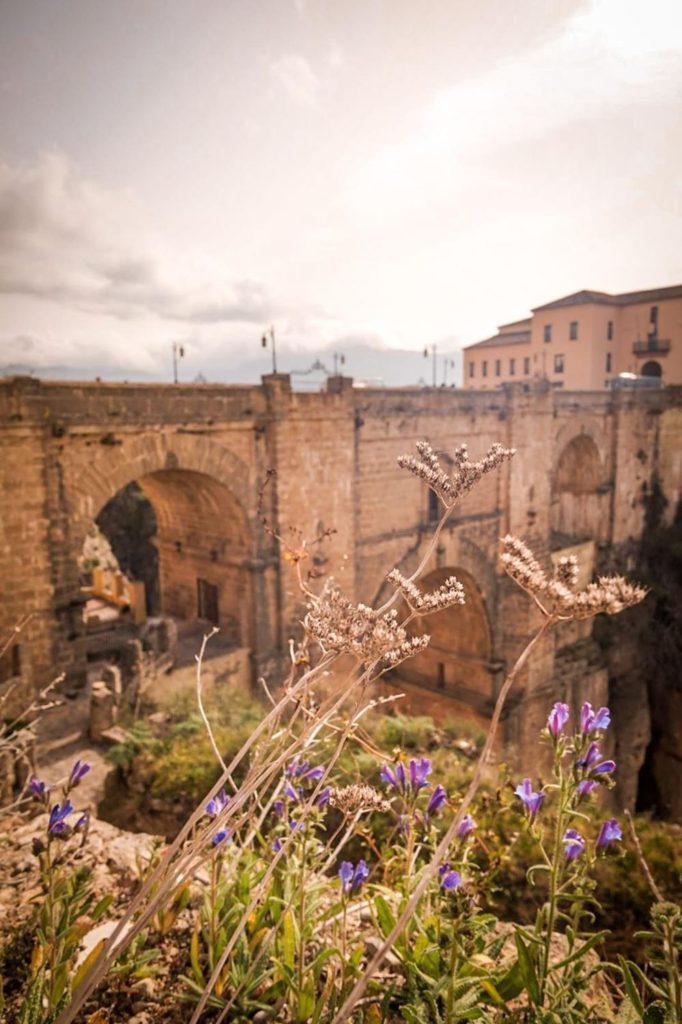
Setenil de las Bodegas – the Rock City in Andalusia
Located less than 20 kilometers from Ronda, it is one of the more popular destinations in Andalusia. A tourist route of pueblos blancos – white towns – runs through the town, but that’s not what sets it apart from other places in Spain. Setenil de las Bodegas is a town carved into the rock! The rocks are home to houses, stores, and restaurants. If you are interested in this topic, another such place is the rock houses in Guadix.
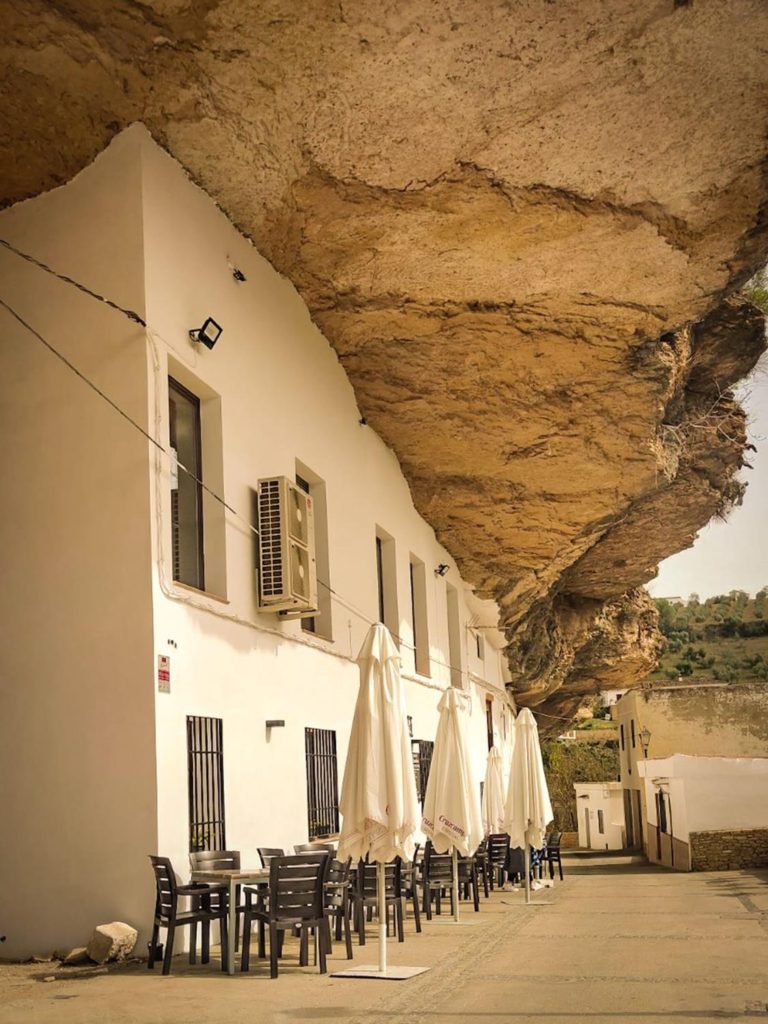
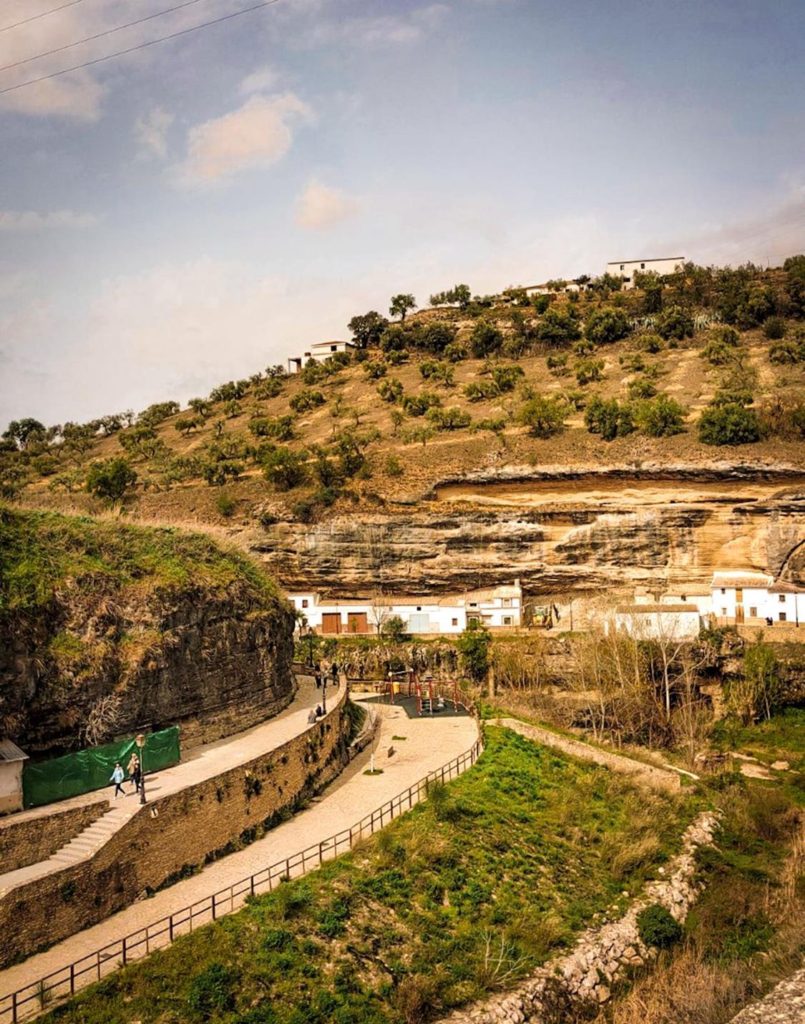
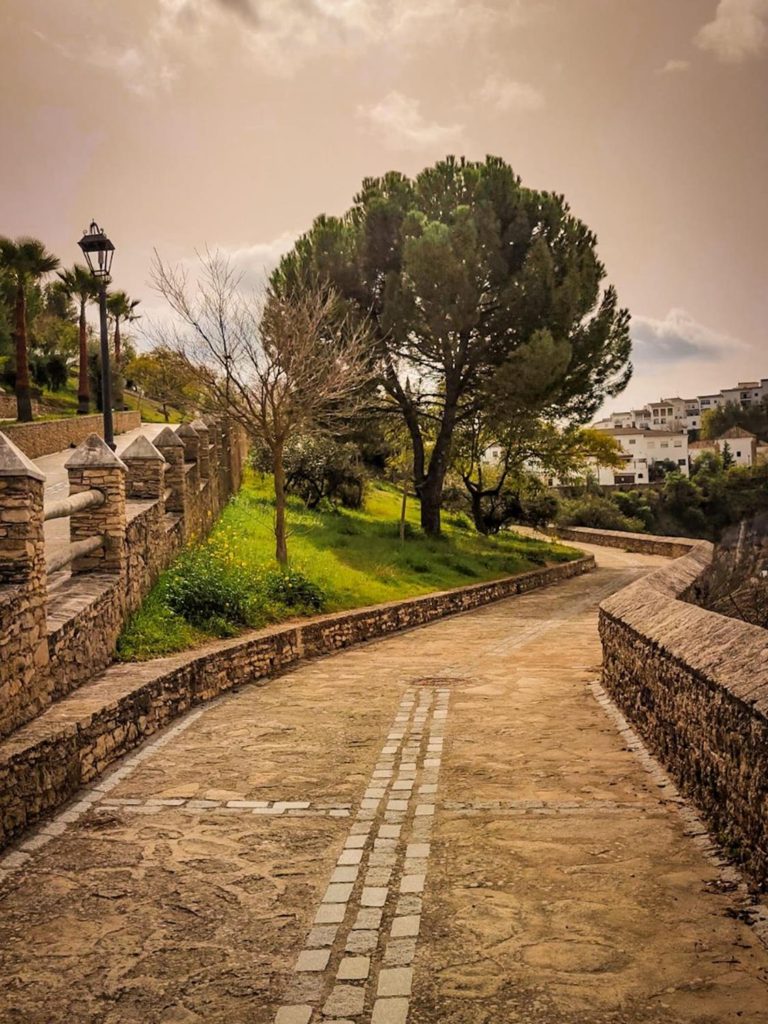
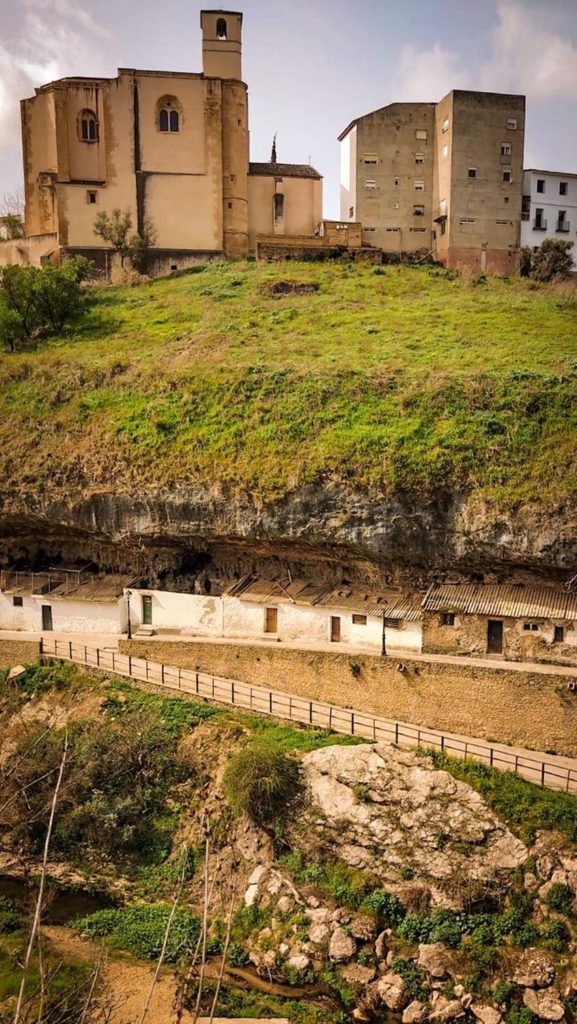
Andalusia – What to Eat?
In Andalusia, you should try both Spanish cuisine and typically Andalusian cuisine. There are really a lot of dishes, and I will cite three interesting flavors:
- Roasted eggplant with cane syrup is a traditional Andalusian dish. You can choose it as a lunchtime appetizer.
- Salmorejo, which is a cooler similar to gazpacho soup but thicker (with the addition of bread). In my opinion, both soups are worth trying, although I personally prefer gazpacho.
- Manzanilla is a fortified white wine from the Jerez region of Andalusia. The wine has aromas of wildflowers, olives, candied fruits, and almonds. It won’t be my favorite wine, but it’s worth trying while in this region of Spain!
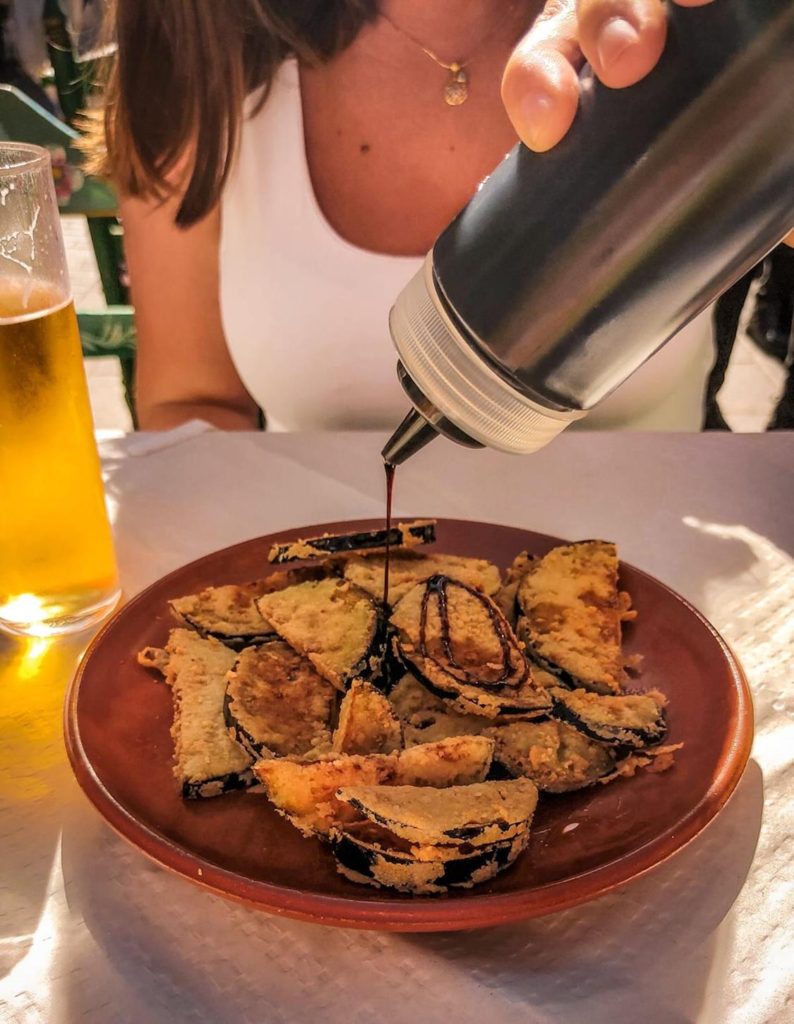

Andalusia – Where to Stay?
Andalusia is a large region, so with overnight stays, there is one problem. If you plan to visit all the interesting places and attractions, you can spend a really long time in the car. That’s why it’s a good idea to plan it in advance, what you want to see, and, above all, check the distances. We visited Gibraltar and less popular points in addition to the mentioned attractions and spent 39 hours in the car, covering 2750 km. Getting to the airport (we landed in Madrid) took about 9 hours round trip, but even 30 hours for 2.5 weeks is plenty, in my opinion.
Regarding accommodations, you can check, for example:
Booking.comWhat is worth seeing in Andalusia?
These are, of course, some of the attractions I visited. As you can see, most of the places I visited were around Malaga, where we stayed. What else is worth seeing in Andalusia? What is the most beautiful Andalusian city/place? I’m curious about your opinions!
Other Andalusian attractions include (among others):
- Seville, first of all, climb the Giralda. It used to be a minaret, now a cathedral tower, from which you can see the city skyline beautifully.
- Medina Azahara – the ruins of an Arab lost city from the 10th century.
- Pulpí Geode – a giant geode, one of the largest in the entire world.
- Úbeda and Baeza in the province of Jaén – two UNESCO-listed Renaissance towns.
- The highest peak in mainland Spain, Mulhacén (3482 meters above sea level).
- Tabernas desert.
- Parque Nacional de Doñana – a park that has been listed as a UNESCO World Cultural and Natural Heritage Site, an amazing sanctuary for fauna, especially birds. It is worth going here in spring; in summer, some people are not satisfied (it is about the number of animals).
You can read more about mainland Spain here:
13 Best Things to Do in Barcelona
Top Things to Do in Lloret de Mar (Spain)
Discover the Hidden Gems of Costa Brava
Sant Feliu de Guixols: What To Do in This Catalan Town
Discover Costa Daurada – Attractions and Beautiful Places
Vacations in Tossa de Mar – Discover the Extraordinary Beauty of the Costa Brava
Reus – What To See In Gaudi’s City?
Hospitalet del Infante – Here You Spend a Beautiful Vacation